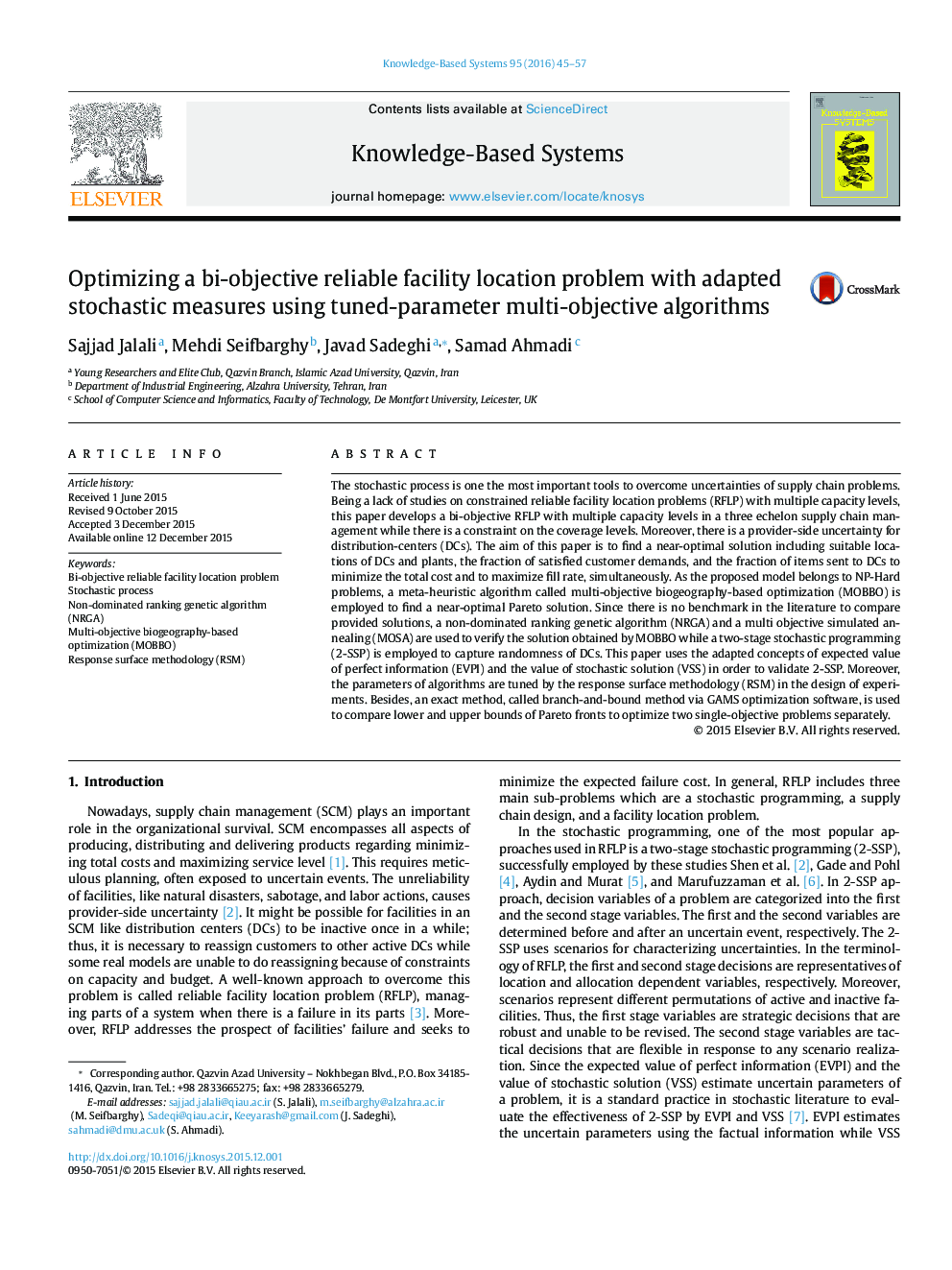| Article ID | Journal | Published Year | Pages | File Type |
|---|---|---|---|---|
| 402553 | Knowledge-Based Systems | 2016 | 13 Pages |
•This paper develops a bi-objective reliable facility location problems (RFLP).•There is a constraint on DCs based on both their distance and capacity level.•There is a provider-side uncertainty for distribution-centers (DCs).•Three tuned-parameter metaheuristic algorithms are employed to solve the model.•An exact method via GAMS is used to validate solutions as well.
The stochastic process is one the most important tools to overcome uncertainties of supply chain problems. Being a lack of studies on constrained reliable facility location problems (RFLP) with multiple capacity levels, this paper develops a bi-objective RFLP with multiple capacity levels in a three echelon supply chain management while there is a constraint on the coverage levels. Moreover, there is a provider-side uncertainty for distribution-centers (DCs). The aim of this paper is to find a near-optimal solution including suitable locations of DCs and plants, the fraction of satisfied customer demands, and the fraction of items sent to DCs to minimize the total cost and to maximize fill rate, simultaneously. As the proposed model belongs to NP-Hard problems, a meta-heuristic algorithm called multi-objective biogeography-based optimization (MOBBO) is employed to find a near-optimal Pareto solution. Since there is no benchmark in the literature to compare provided solutions, a non-dominated ranking genetic algorithm (NRGA) and a multi objective simulated annealing (MOSA) are used to verify the solution obtained by MOBBO while a two-stage stochastic programming (2-SSP) is employed to capture randomness of DCs. This paper uses the adapted concepts of expected value of perfect information (EVPI) and the value of stochastic solution (VSS) in order to validate 2-SSP. Moreover, the parameters of algorithms are tuned by the response surface methodology (RSM) in the design of experiments. Besides, an exact method, called branch-and-bound method via GAMS optimization software, is used to compare lower and upper bounds of Pareto fronts to optimize two single-objective problems separately.
